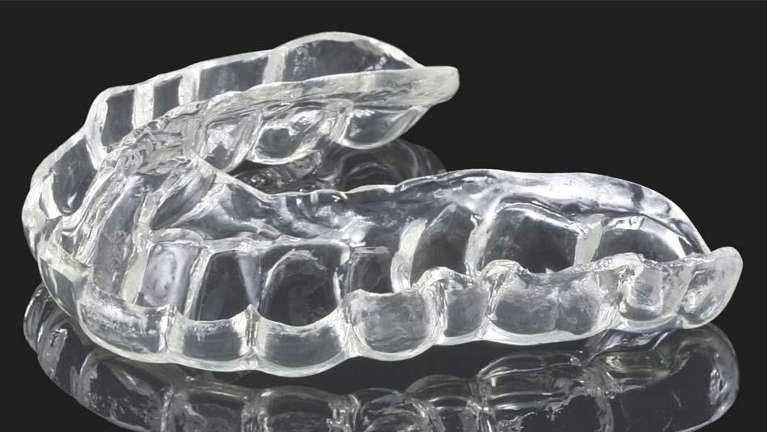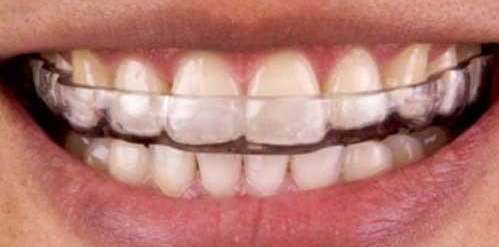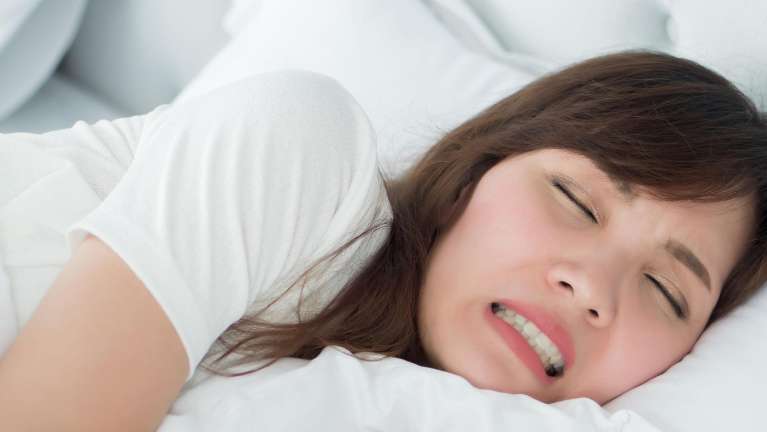
WHAT ARE OCCLUSAL SPLINTS FOR?
An occlusal splint is a removable appliance made of acrylic /resin that covers all the biting surfaces of upper or lower teeth.
It is indicated for patients who have jaw/muscle pain or headaches; temporomandibular disorders (TMD) or patients who display excessive wear of their teeth from clenching or grinding(bruxism).
It will allow the jaw to find its best position because the splint prevents the teeth from locking together, which reduces the load on jaw muscles & teeth.
THE ADVANTAGES OF AN OCCLUSAL SPLINT ADJUSTMENT
Protects natural teeth from further wear & prevents further cracking of teeth. Protects restorations, resin fillings or Build-ups, Crowns, Bridges, or Implant restorations.
Relieves jaw joint pain, muscle aches in the jaw, jaw/muscle-related headaches/neck pain. Stabilises jaw joint.
Promotes jaw relaxation in patients with stress-related pain symptoms.
WHEN TO WEAR YOUR OCCLUSAL SPLINT
If you are aware you grind at night, then wear it at night while you sleep to prevent this. If you are experiencing pain in the morning on awakening again this is a sign of night-time clenching so again wear at night until symptoms subside.
WHAT TO INITIALLY EXPECT
Excess saliva for a few days, this normally subsides after a week or two of continued use.
Once put in, it feels tight initially for a few minutes, this is normal. It will feel snug against the teeth but not too tight or uncomfortable. It should not rub the gums. The jaw position will be unusual at first but after a few days, you become used to the new position. If pain was a symptom, it should subside.
Altered speech should return to normal if using it during the day as the tongue adjusts to the new position. Practice reading out loud in private before using in public for the first time.
WHEN SHOULD YOU REMOVE OCCLUSAL SPLINTS
Do not wear it whilst eating, it is not designed for this.
Remove while cleaning your teeth.
Not to be worn during sporting activities, this is not a sports mouthguard.
OCCLUSAL SPLINT CLEANING & STORAGE
The splint needs to be kept clean, just like your own natural teeth. Bad breath & taste will result from inadequate cleaning.
Clean with a soft brush & anti-bacterial hand soap for a minute before & after use. Rinse & dry then place in storage box provided. Do not use toothpaste to clean and not Soak in Dettol/denture cleaning agents or alcohol-based mouthwash for long periods.
MAINTENANCE TIPS
Keep appointments for review or adjustments of the occlusal splint.
Bring along to EVERY DENTAL APPOINTMENT so this can be checked & adjusted as required.
Do not keep wearing it unless you are having the periodic 6 monthly appointments so it can be checked it is fitting/working properly.
WHEN TO CONTACT YOUR DENTAL CLINIC
- If pain is not reduced in jaw joints after several days of continued use.
- If the bite is not comfortable.
- It feels too loose & keeps falling out. Notice any cracks or damage.
If you are experiencing any of the above, please contact the Paddington Dentistry clinic to book an emergency appointment or book online.

